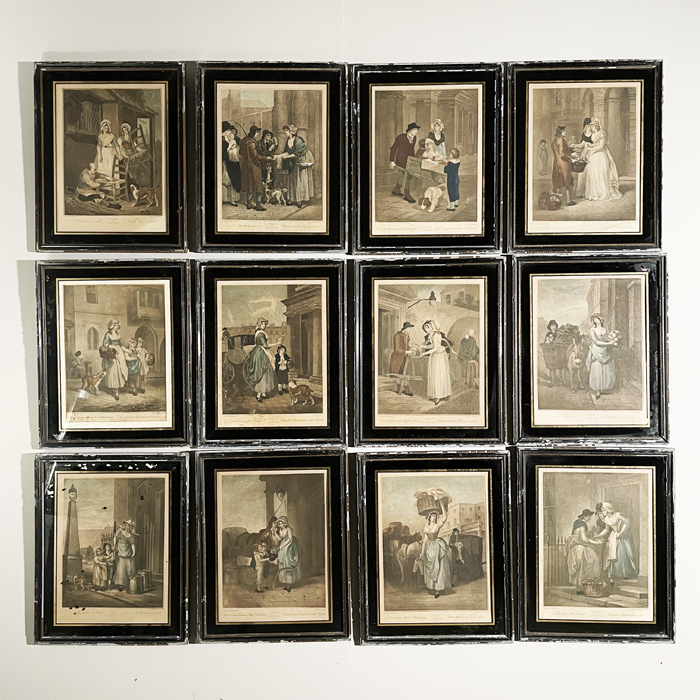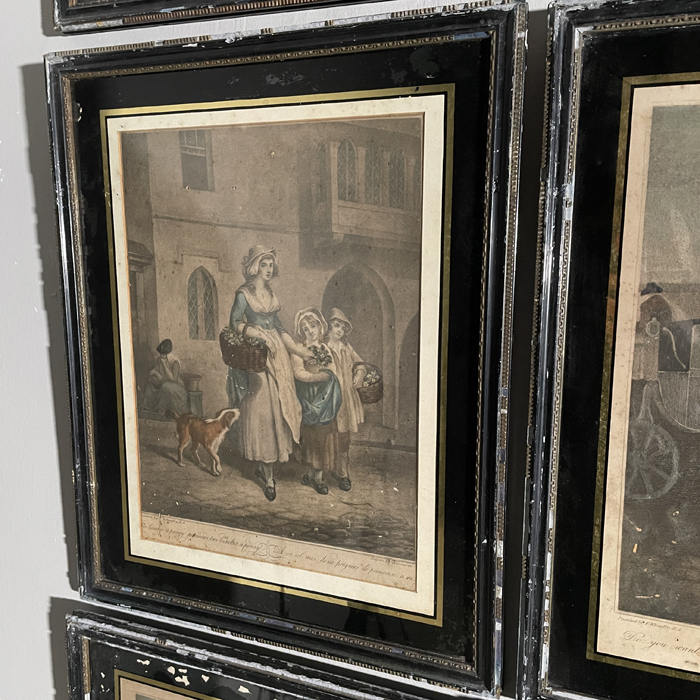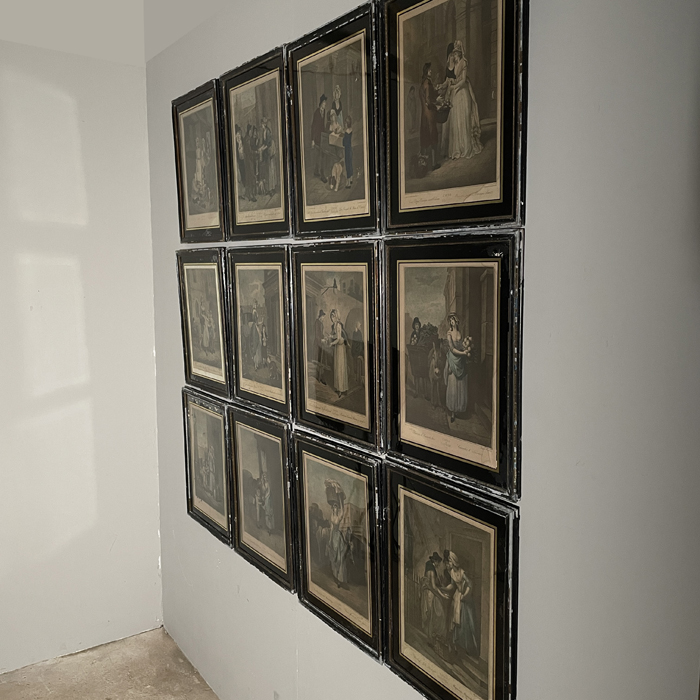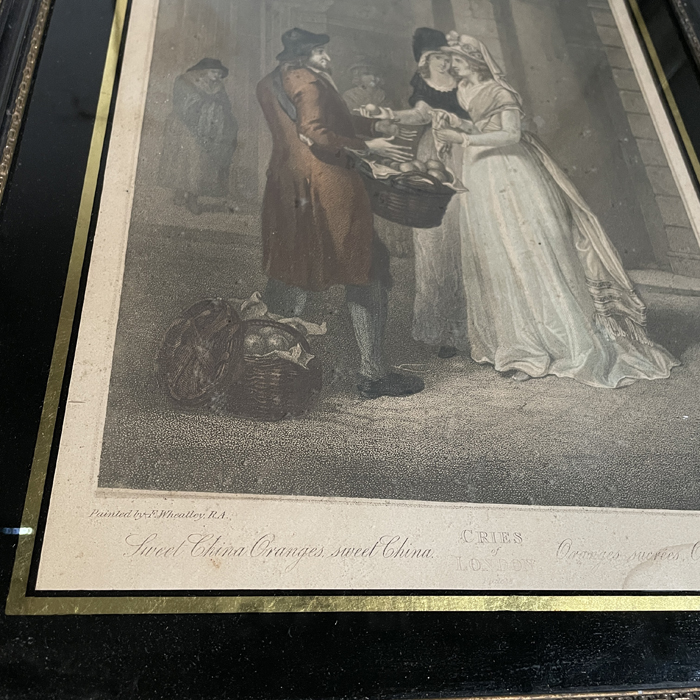A set of 12 “Cries of London” framed hand-coloured engravings
each hand-coloured engraving, depicting a street-seller plying their wares, presented in Verre Eglomise frames, [Condition: the prints, faded, foxed and browned in places, the frames with losses and flaking to the Verre Eglomise]
£1,550 the set
In stock
The “Cries of London” series, depicts the lives and professions of the traders of 18th century London, who worked the streets, hawking their wares. The engravings, originally from paintings by Francis Wheatley, were published by Colnaghi & Co. in London, they were first published in 1797. This set was mostly by Giovanni Vendramini (1769-1839), an Italian by birth, who came to London in 1802, with one by Schiavonetti and a couple by Cardon.
Many of these engravings bear the framer’s original label (early 20th Century): “J.J. Patrickson, Practical Picture Frame Maker, Carver and Gilder…. 108 Church St Chelsea … Workshops 120 Fulham Road …Telephone 4490 Western”.
The Cries are given in copperplate script in both English and French:
“Two bunches a penny, Primroses two bunches a penny” (Plate 1)
“Milk Below Maids” (2)
“Sweet China Oranges, sweet China” (3)
“Do you want any Matches?” (4)
“New Mackrel New Mackrel” (5)
“Knives, Scifsors and Razors to Grind” (6)
Round and Sound Five pence a Pound Duke Cherries” (8)
“Strawberrys Scarlet Strawberries” (9)
“Old Chairs to Mend” (10)
“A New Love Song only Ha-penny a piece” (11?)
“Hot Spice Gingerbread, Smoking Hot!” (12)
“Turnips & Carrots ho” (13)
Wheatley first exhibited his fourteen paintings of the “Cries” at the Royal Academy between 1792 and 1795. Colnaghi & Co. were impressed by his work and struck a deal to publish the engravings after Wheatley’s famous paintings. Thirteen of the fourteen paintings were engraved with the stipple technique by some of the most noted engravers in England, including Vendramini as well as Niccolo Schiavonetti and Thomas Gaugain.
These colourful prints give a glimpse of 18th century London’s peddlers, charlatans, street hawkers, milkmaids and grocers who made their living on the city streets. They advertised their wares with musical shouts or melodic rhymes, which were a constant part of the sights and sounds of the city at that time. Wheatley grew up in Covent Garden among the hawkers with their cries echoing in the streets around the market. Wheatley’s wife was also a painter and exhibited at the Royal Academy. She served as the model for the women in several of the scenes.
Two years before Wheatley exhibited his paintings at the Royal Academy, the forty-one year old painter had been elected to the Royal Academy over the King’s nominee. King George was upset at this purported snub and made sure that Wheatley never again received another of his court’s commissions. It ruined him.
Wheatley was declared insolvent in 1793 and struggled to make a living until his death in 1801, when the Royal Academy paid his funeral expenses. It is significant then that Wheatley created these wonderful images of street sellers – commoners from the streets around him. Although they were seen at the time as of little consequence compared to his aristocratic portraits, they are now the works that define his lasting reputation.








